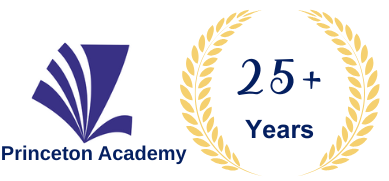Introduction
We are currently experiencing the most competitive talent landscape ever. There have been more changes in the past two years than we’ve experienced in the last decade.
Some things haven’t changed, of course. Many industries are still dealing with crippling skills shortages, but candidate and employee expectations have changed irrevocably.
The pandemic led many to reassess their lives, including how and where they work. Today’s employees also want career progression. They’re interested in making a difference with meaningful work, but most importantly, they want flexibility and a good work-life balance. Employers must take into account these renewed employee expectations.
Regardless of the motivation, companies need a solution as staff turnover and persistent vacancies stifle growth and hinder long-term outcomes and priorities. Learn winning strategies to help mitigate the risk of attrition at this workshop .
Key Benefits :
- What your workforce want and need: how to collect, analyse and learn from data
- How to maximise employee wellbeing: avoid unnecessary wastage and costs
- The key elements of a workable policy: and how to successfully implement it immediately
- Working structures post-COVID: Benchmarking your organisation against employers of choice
- Culture change: A highly interactive working session to examine your own offerings and identify areas of improvement
- Rewards and development: Effective strategies to incentivise your workforce to stay
- Group work training exercise: Leadership, embedding an appropriate culture top-down to minimise attrition
- Practical interactive session: employee wellbeing
Working structures post-covid:
· Returning to work: key elements of a workable recovery plan
· Putting people at the heart of your long-term strategy
· Team building in the remote era: autonomy, empowerment, goal-setting and independent working
· Stay interviews: When, why and how to check in with employees to maximise retention
· Are your management structures and styles contributing to employee resignations? Ten questions to make sure you’re supporting your most valuable assets
Culture change:
· Creating and communicating credible and inspiring company values
· Work / life balance – challenges and solutions
· Benchmarking your offerings as an employer
· Post-furlough return to work: designing programmes to maximise retention
· Restructuring roles and responsibilities to reflect employee needs
· Effective employee surveys and data collection: what, who and why
· Using data effectively to retain employees
· Retaining and motivating in 2022 through CSR, volunteering and community initiatives
· Onboarding onwards: communicating company values to ensure employees feel included and empowered
Rewards and Development:
· What’s motivating your employees in 2022?
· Industry benchmarks and best practice: strategies to remain competitive
· Evaluating and establishing appropriate pay and benefit structures post-RTW: key considerations and examples
· Flexi-days, unpaid leave, sabbaticals, learning programmes, childcare and other options to examine
Training and Leadership:
· Upskilling and cross-skilling as engagement and retention tools
· Designing and resourcing professional development and learning programmes: what’s working in 2022?
· Understanding and matching market expectations post-Covid
· Mentorship and socialising inn the new normal: smart ideas for 2022
· Avoiding losing staff through poor leadership: supporting your management team to have a positive impact
· Feedback, communication and data: leveraging data to reduce churn
Employee Wellbeing
· Post-covid RTW challenges
· Maximising engagement in stressful times
· Key elements of an effective and proactive wellbeing programme
· Recognising burnout, stress, anxiety and disengagement: pre-emptive and reactive strategy
· Feedback and communication: listening and reacting to your workforce
· How engaged are your employees and what should you be doing to improve this?
· Processes and productivity in the remote working environment: tools and techniques
COURSE SCHEDULE & FEES
DOWNLOAD COURSE CONTENTS
Please click the button below to download the course content. You'll need to provide your contact information to receive the document.
INCOMPANY/GROUP TRAINING REQUEST
Why Choose Our Incompany Program?
- 🎯 Tailored content specific to your business goals
- 👥 Train entire teams together, saving time and cost
- 📍 Delivered at your location or virtually
- 📅 Flexible scheduling to suit your timelines
- 📈 Increase retention and application of skills
